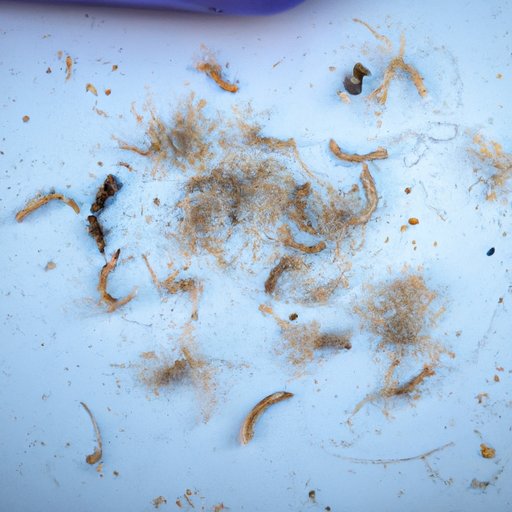
Introduction
Flea infestations can be a pesky and frustrating problem for both pets and their owners. Not only can fleas cause discomfort and itchiness for pets, but they can also be challenging to control and eliminate. That’s why it’s important to identify the severity of a flea infestation. This article aims to help readers learn how to tell how bad a flea infestation is by examining physical signs, comparing infestation levels, considering household issues, environmental factors, and seeking professional consultation when necessary.
Identifying Physical Signs
One way to identify a flea infestation is by examining your pet’s behavior. If you notice your pet excessively scratching or biting themselves, it could be a sign of fleas. Moreover, flea droppings are often found on pets’ skin and fur. They look like tiny black specks and can easily be seen against light-colored fur. Another way to identify flea infestation is through flea dirt, which appears as tiny black specks in your pet’s bedding. Lastly, insect bites are a clear indication of fleas. Typical bite marks occur in clusters and are red in color.
If you find any of these physical signs, it’s essential to act immediately. A flea infestation can quickly escalate and cause health issues for pets and humans living in the same house. Consult with your veterinarian and start treating your pet for fleas immediately.
Comparing Infestation Levels
Comparing the number of fleas seen on your pet to photos of flea infestations can help gauge the infestation level. The number of fleas seen on your pet can range from moderate to severe infestation. The moderate infestation level is when there are a few fleas present on your pet. In contrast, severe infestations usually include numerous fleas, and it’s often hard to control the problem.
Pest control products like flea combs, sprays, foggers, and bombs can also help determine the severity of the infestation. Flea combs are useful in catching fleas, while sprays and bombs help to kill fleas in a specific area. Ensure you read the instructions carefully before using any flea control products as some are unsafe for pets and humans.
If you discover a high level of infestation, it’s best to get professional help from a pest control expert. Flea infestations can be challenging to control and manage without professional help.
Consideration of Household Issues
Fleas lay eggs that develop into larvae that can hide in the dark and humid areas of the house. Keep an eye out for flea larvae and commonly check moist areas such as outside plants, carpet, and furniture, among others. Detecting fleas’ larvae is vital in controlling and eliminating flea infestations.
Also, keep an eye out to see if the problem is localized or widespread. Localized issues can be eliminated by focusing on a specific area. In contrast, widespread infestations require a comprehensive approach with preventative measures, cleaning, and sanitation practices.
If you have a flea infestation in your house, it’s essential to act immediately. Ensure you vacuum frequently and sanitize your house regularly. Carpets, furniture, and bedding should also be cleaned frequently and treated with flea control products.
Environmental Factors
Knowing environmental factors that could worsen the flea infestation problem is essential. For example, hot and humid weather increases flea activity. Therefore, monitor the weather and control flea treatment to match the climate. Also, look for flea infestations in other parts of the community. A community-wide flea problem can quickly affect your pet, so be proactive and take preventative measures to protect your pet.
Assessing how long the flea infestation has lasted also helps determine the severity of the problem. A severe problem could have existed for more than two weeks, and it’s vital to act immediately by consulting with your veterinarian and implementing pest control measures.
Professional Consultation
If the infestation is beyond your control, which can happen with severe flea problems, seeking help from a pest control expert is vital. Not only do they have the training and equipment to handle the problem, but they also can identify and control the problem’s source.
Talking to your veterinarian is also important if you suspect your pet has been affected by fleas. They can recommend the best course of treatment to get rid of fleas and prevent reinfestation. Finally, take preventative measures to ensure your pet’s environment remains flea-free. Flea preventatives for your pet remain the first line of defense against flea infestations.
Conclusion
Flea infestations can be challenging to control if you don’t know how to identify and manage the problem. In this article, we have covered numerous tips on how to tell how bad a flea infestation is, including examining physical signs, comparing infestation levels, considering household issues and environmental factors, and seeking professional consultation. Implementing preventative measures to keep your pet flea-free is essential.
Whether the infestation is moderate or severe, we urge you to apply these tips as soon as possible. By doing so, you can ensure you keep your environment clean and safe for both you and your pet.





